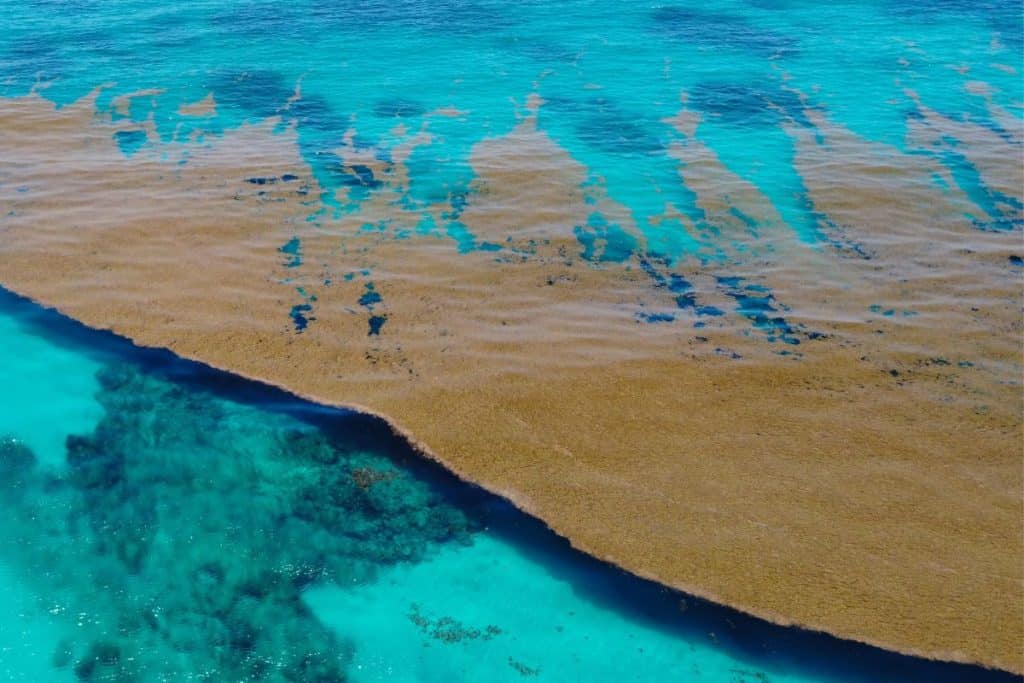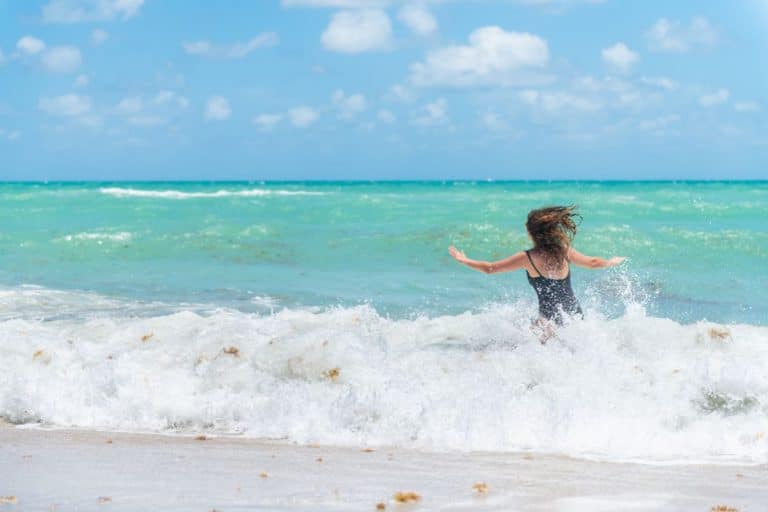According to researchers at the University of South Florida’s Optical Oceanography Lab, the Great Atlantic Sargassum Seaweed Belt, a record-breaking mass of foul-smelling algae that started to arrive on Florida’s famous beaches this spring, shrunk by 75% last month in the Gulf of Mexico.
Scientists discovered 3 million tons of sargassum in the Caribbean Sea in April, setting a record for the amount of seaweed.
The huge decline in the Gulf of Mexico last month was “beyond expectation,” according to a statement from the Optical Oceanography Lab, even though scientists had predicted the mass would decrease in June.
“Very little Sargassum was found by the end of June in the Straits of Florida and along the east coast of Florida,” the bulletin said.
According to Chuanmin Hu, an optical oceanography professor at the University of South Florida, such a sharp decline has “never happened in history at this time of year.”
He noted that sargassum often begins to drop in Florida in July and is largely gone by September.
But he predicts “the sargassum season for Florida is very likely over for this year.”
“That’s good news for Florida residents,” he added, noting that he and his coworkers at the Optical Oceanography Lab had heard of “clean beaches” all around the state.
Hu continued, the sargassum that ends up on Florida beaches comes from the western Caribbean and the Gulf of Mexico. However, those “source regions” are also not seeing much sargassum, which is excellent news for Florida. Hu claims that a little portion of the seaweed might still wash up on Florida beaches, but not enough to cause a significant issue.
Stronger-than-average winds in the Caribbean Sea and Gulf of Mexico may have caused the sargassum to either break up into smaller clusters or sink to the ocean floor, although there is not enough data to determine a cause, Hu said.
Significant reductions of sargassum were observed in both the Gulf of Mexico and the western Caribbean Sea. However, an upsurge was observed in the Central West Atlantic region. Overall, the entire sargassum mass experienced a decrease throughout June. By the end of the month, it was estimated that the total sargassum mass spanning from West Africa to the Gulf of Mexico amounted to approximately 9 million metric tons, as stated in the bulletin.
Although Florida has pristine beaches, Hu pointed out that in the eastern Caribbean, “they’ll still see a lot of sargassum.”
According to the bulletin, most Sargassum was discovered in June in the Lesser Antilles and on the southern coasts of Hispaniola, Jamaica, and Puerto Rico.

What is sargassum?
Sargassum seaweed is a unique and widespread species of marine algae that swims freely in the sea. It forms large, dense mats that can extend for miles across the surface of the water. The name of the alga is derived from the Sargasso Sea, a region in the North Atlantic Ocean where it is particularly abundant.
Sargassum algae play an important role in marine ecosystems, providing shelter, food, and nursery grounds for a variety of marine animals. It serves as a habitat for various marine organisms, including small fish, turtles, crabs, and shrimp. It is also an important food source for migratory species such as sea turtles and birds.
In recent years, however, the amount of sargassum seaweed washing up on the world’s coasts has increased significantly. This influx of seaweed can have detrimental effects on local ecosystems and economies. When large amounts of sargassum decompose on the coasts, they release foul-smelling hydrogen sulfide gas that can be harmful to human health and affect tourism.
The causes of the increasing sargassum bloom are not yet fully understood, but factors such as nutrient pollution, climate change, and ocean currents are believed to contribute to its spread. Efforts are underway to develop innovative strategies to contain and manage the sargassum bloom. These include developing harvesting techniques, researching potential uses for the algae, and coastal cleanup initiatives to protect affected regions.

